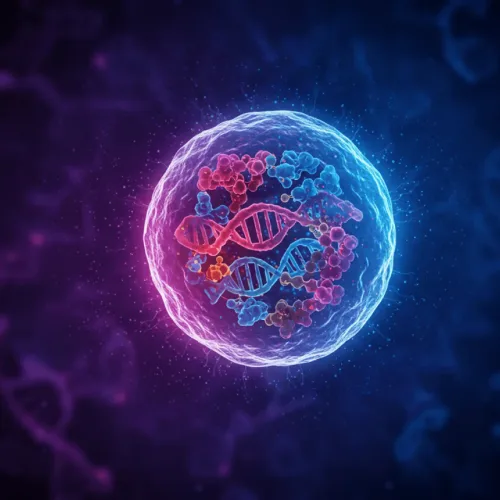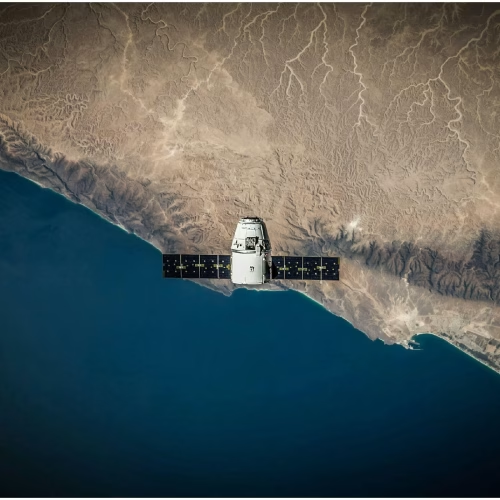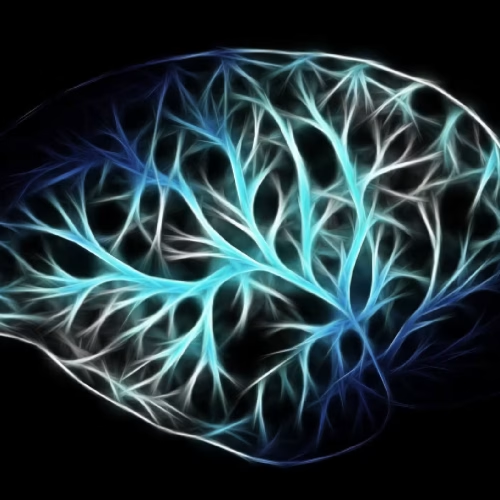Modern medical diagnosis of cancer has entered a period of exciting innovation. Statistics shows that cancer will affect one out of every three individuals during their lives. Research and development of rapid, non-invasive diagnostic techniques are at an all-time high because of increasing demand. Modern medical requirements surpass the functionality of traditional biopsies because these methods give problems regarding painful procedures and extended durations. In this scenario, the field of liquid biopsies and multi-omics applications arises.
These innovative technologies may change how doctors detect and understand cancer. A liquid biopsy uses samples like blood or saliva to minimize invasiveness and allow diagnosis. Multi-omics, by contrast, bring together authoritative data from various biological levels to achieve unprecedented accuracy. Together, they promise early detection, improved treatment methods, and new assurances for patients and their families. In this blog, we will describe how these innovations work, their amazing benefits, and how they impact lives.
What Are Liquid Biopsies?

Liquid biopsy has been a major improvement in the field of cancer detection. It works more in the realm of blood, saliva, and urine than tissue collection. This is the case in normal biopsies that involve a big surgical intervention for tissue extraction. Its approach is to analyze circulating tumor cells, cell-free DNA, or exosomes to detect the disease.
Cancer diagnosis becomes possible through a painless blood test, which delivers critical disease information without surgical procedures. Biomarker isolation through this technology gives information about tumor properties quickly with precise accuracy.
Benefits Compared to Regular Biopsies
Liquid biopsy can perform procedures far better than traditional diagnostic techniques. Below is a quick comparison:
| Traditional Biopsy | Liquid Biopsy |
|---|---|
| Invasive procedure | Minimally invasive test |
| Higher costs and complexity | Affordable and simpler |
| Time-consuming | Faster results |
| Limited repeatability | Easily repeatable tests |
Liquid biopsy is considered the best option for verifying how cancer progresses. It also checks how it responds to treatment over time. This method provides reduced discomfort to the patient. Additionally, it provides more timely information to the doctor.
Real-Life Uses
Liquid biopsy has changed the lives. For example, lung cancer patients can now use this technique for early diagnosis. It identifies mutations in the blood test assay that are responsible for lung cancer; thus, treatment can begin immediately.
Dr. Bert Vogelstein, a prominent researcher, once said:
“Liquid biopsies are not just tests; they are windows into the biology of cancer.”
These applications demonstrate how they can save many lives when detected early.
Multi-Omics: The Future of Personal Medicine
What Is Multi-Omics?
The integration of multi-omics data enables health professionals to observe cancer through multiple dimensions, which include genomics, proteomics, transcriptomics, and metabolomics. Building complex puzzles is similar to the situation description because each “omics” layer adds additional dimensions and clarity. This approach allows us to identify early instances of cancer and direct therapies that are highly targeted.

Benefits of Multi-Omics in Cancer Diagnosis
Multi-omics aids in providing extreme levels of precision in cancer care. Some of the reasons are here.
- The detection of cancer types and subtypes is quite accurate.
- Detecting mutations that could inform individualized therapies.
- Treatment response prediction in patients.
Recent studies have focused on augmenting early and accurate interventions toward better survival outcomes using multi-omics data. In fact, the promise of machine learning towards augmenting several technological inventions appears to be ever-growing.
Examples of Multi-Omics in Use
The outcomes are already changed with multi-omics in clinical practice. For example, researchers used genomic and proteomic data to inform personalized treatment for breast cancer patients. Those personalized treatments targeted mutations specific to each patient and greatly improved recovery rates.
It sounds as though AI-powered tools like DeepMind run the multi-omics data through algorithms to help mold the behavior of tumors, as it is. These tools will also support actionable insights for oncologists for a more robust decision in the treatment approach.
How Liquid Biopsies and Multi-Omics Work Together
Liquid biopsy with multi-omics technology forms an expert partnership for both cancer diagnosis and treatment strategies. Liquid biopsy serves as an invasive-free method to detect cancer early, but multi-omics delivers additional complete biological information. These two technologies deliver a full picture that reveals the complete nature of cancer complexities.
How This Combination Improves Cancer Care
By using these technologies, doctors can:
- Earlier and more accurate identification in detecting cancer.
- The system provides continuous updates regarding treatment effectiveness.
- Identify resistant mutations and adjust therapy accordingly.
Liquid biopsy technology can detect circulating tumor cells during the process of breast cancer detection. The combined analysis of genetic and proteomic data from cells by multi-omics technology leads to determining ideal treatment strategies.
Understanding the Process
The list below represents a simplified workflow of how these technologies work together:
- Sample Collection: Liquid biopsy collects a blood sample.
- Data Analysis: Multi-omics extracts genetic, proteomic, and metabolic data.
- Insights Generation: AI tools interpret the data to guide personalized treatment.
Accurate diagnosis outcomes result from the mutual collaborative nature of computer-aided systems and healthcare providers. The healthcare organization uses personalized care to empower their patients with customized treatments. Through this synergy, healthcare professionals achieve better survivorship along with enhanced patient life quality.
Success Stories and Case Studies
These are not merely theoretical, but have come to prove themselves. Consider, as a case in point, lung cancer:
- A blood-based liquid biopsy was performed that detected an MTHFR mutation in one patient, thereby directing the use of targeted therapy. Multi-omics further confirmed the tumor’s molecular profile, ensuring appropriate matching.

Another breakthrough involved breast cancer:
- Through multi-omics methods on liquid biopsies, researchers isolated a set of protein markers. This may warrant prospective earlier detection and improved prognosis for the patients.
Examples of these cases bring out the potential that these devices contribute to clinical practice, and new hope for millions of people.
Challenges and Ethical Issues
Current Limitations
The approved techniques of liquid biopsy and multi-omics encounter multiple implementation challenges.
- Data Complexity: Multi-omics bring forth a large amount of data, with the requirement of modern-day methods and expert hands on with the use of that data.
- Sensitivity Issues: Liquid biopsies could fail to capture early cancer signals or incorrectly screen for them.
- Accessibility: Many parts of the world do not have these because there are prohibitive costs.
Ethical Concerns
The use of advanced diagnostics raises ethical concerns. The storage and use of genetic data also keep privacy threats, as they can misuse sensitive information. Inequitable health systems mean that access to these innovations will remain unequal, especially in low-income areas.
Possible Solutions
The movement is taking place toward overcoming these challenges. For example.
- Machine learning algorithms are revising multi-omics analysis for improved accuracy.
- Such global collaboration as the Global Genomics Initiative promises that those technologies should become affordable to masses.
- Medical data privacy protection is being achieved through decentralized information systems.
The obstacles still exist in that. Nevertheless, the advancement up until this moment could result in another scenario where these technologies will be available to the populace. And that hints at the possibility of this technology being ethical in its governance.
The Future of Cancer Diagnosis

The future of cancer diagnosis promises to be brighter than ever. Researchers are proving the sensitivity of liquid biopsies in their ability to detect even smaller tumors. Enormous efforts are being put into the revolutionization of multi-omics data analysis with AI and machine learning.
Taking these solutions to the global scale is another goal, as making such technologies available around the world could bring about changes. In the coming years, innovation is set to make liquid biopsies and multi-omics routine early detection of cancers in the thousands, which would save even thousands more from suffering.
New Trends to Watch
- Personalized Cancer Vaccines
New cancer vaccine development relies on the multi-omics approach for creating individualized treatments. The vaccines employ individual genomic information to instruct the immune system to fight tumors effectively. - AI-Driven Diagnostics
The use of artificial intelligence produces exact, rapid diagnosis results. AI completes tumor prediction analysis and recommends appropriate medical interventions through the evaluation of multi-omics alongside liquid biopsy information. - Point-of-Care Testing
Fast cancer detection capability will soon become available through small liquid biopsy kits combined with simplified multi-omics instruments in all healthcare environments, including resource-constrained areas.
Experts Share Hope
Dr. Lisa C. Richardson from the CDC aptly states,
“Advancing cancer diagnostics is not just about technology. It’s about saving lives. It’s about giving families hope.”
This technology represents an emerging age of individual healthcare solutions that promotes superior medical results across global patient populations.
Liquid Biopsies and Multi-Omics: A New Hope for Patients and Families
Liquid biopsies and multi-omics analysis, has changed how doctors diagnose and treat cancer. Medical innovations enable patients to track diseases early while receiving custom treatment solutions along with near-constant medical supervision, thus improving their chances of survival and health quality. The technology works successfully for detecting diseases before they become critical, delivering custom patient therapy and conducting extended monitoring procedures.
Various obstacles remain on the path we are traveling. Every step forward brings hope. The hope extends to all cancer patients along with their loved ones and all those who want to get better treatment in cancer healthcare.




